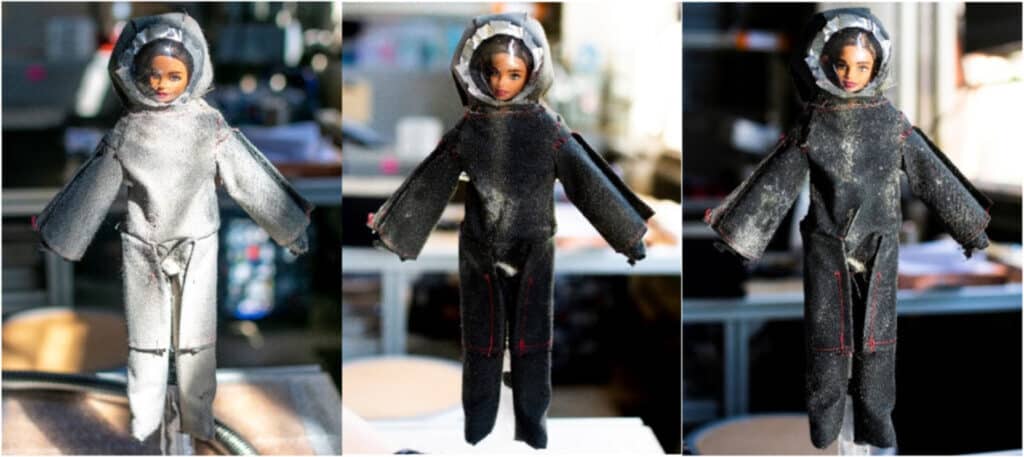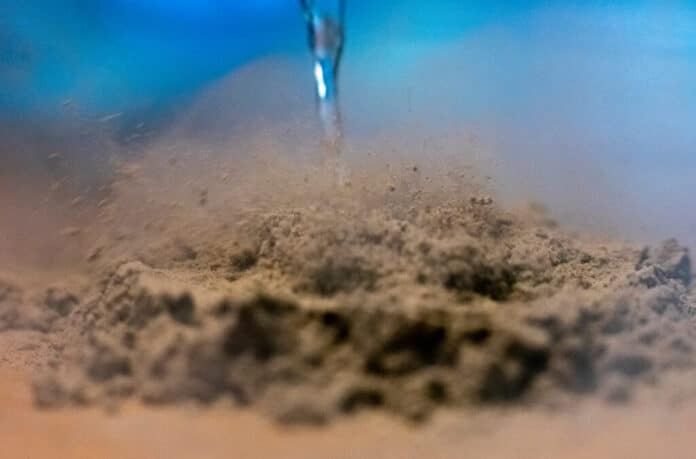Lunar regolith degrades human health and equipment making mitigation paramount for lunar missions. Cryogenic liquid sprays are a recently developed, simple, and convenient concept for dust mitigation in a lunar environment. However, removal efficacy and material degradation under the extreme cryogenic vacuum environment are unknown. Traditional space suit dust mitigation technologies used on the Apollo missions, such as brushing and vacuuming, introduced suit fabric abrasion, which must be addressed for all dust mitigation methods considered for lunar implementation.
A new study shows that a liquid nitrogen spray developed by Washington State University scientists can remove almost all simulated moon dust from a space suit, potentially solving a significant challenge for future moon-landing astronauts. The sprayer outperformed all previously researched methods, eliminating more than 98% of a moon dust simulant in a vacuum setting with little harm to spacesuits.
Men have been placed on the moon, but no one has yet discovered a way to keep them clean while they are there. Comparable to the clingiest packaging peanuts, moon dust attaches to everything it touches. The dust, made up of extremely tiny particles with the consistency of ground fiberglass, is worse than the packing peanuts.

Ian Wells, the first author of the paper and a senior in WSU’s School of Mechanical and Materials Engineering, said, “Moondust is electrostatically charged, abrasive and gets everywhere, making it a very difficult substance to deal with. You end up with a fine layer of dust just covering everything.”
Astronauts used a brush to try and clean the dust off their spacesuits during the six crewed Apollo missions to the moon in the 1960s and early 1970s, but it wasn’t particularly effective. Electronics and engines can be damaged by abrasive and minute dust particles. Also, they entered the spacesuits, breaking the seals and rendering some expensive suits useless. Researchers believe prolonged exposure to dust could result in lung damage similar to that of Black Lung Disease. Astronauts have reportedly reported experiencing “lunar hay fever.”
Wells said, “It posed many problems that affected the missions and the astronauts once they returned home.”
The research team showcased their technology for cleaning space suits using the Leidenfrost Effect in their work. Pouring cold water onto a hot frying pan will cause water beads to form and flow around the pan, demonstrating the impact. Spraying a heated dust-covered object with very cold liquid nitrogen causes the dust to condense and float away on the nitrogen vapor.
The team experimented with their cleaning technique both under normal atmospheric conditions and in a vacuum atmosphere that was more like space. In the vacuum atmosphere, the sprayer performed better.
Scientists noted, “The liquid nitrogen spray was much gentler on spacesuit materials than other cleaning methods. While a brush caused damage to the spacesuit material after just one brushing, the liquid nitrogen spray took 75 cycles before the damage occurred.”
Journal Reference:
- I. Wells, J. Bussey, N. Swets, J. Leachman, et al. Lunar dust removal and material degradation from liquid nitrogen sprays. Acta Astronautica. DOI: 10.1016/j.actaastro.2023.02.016
